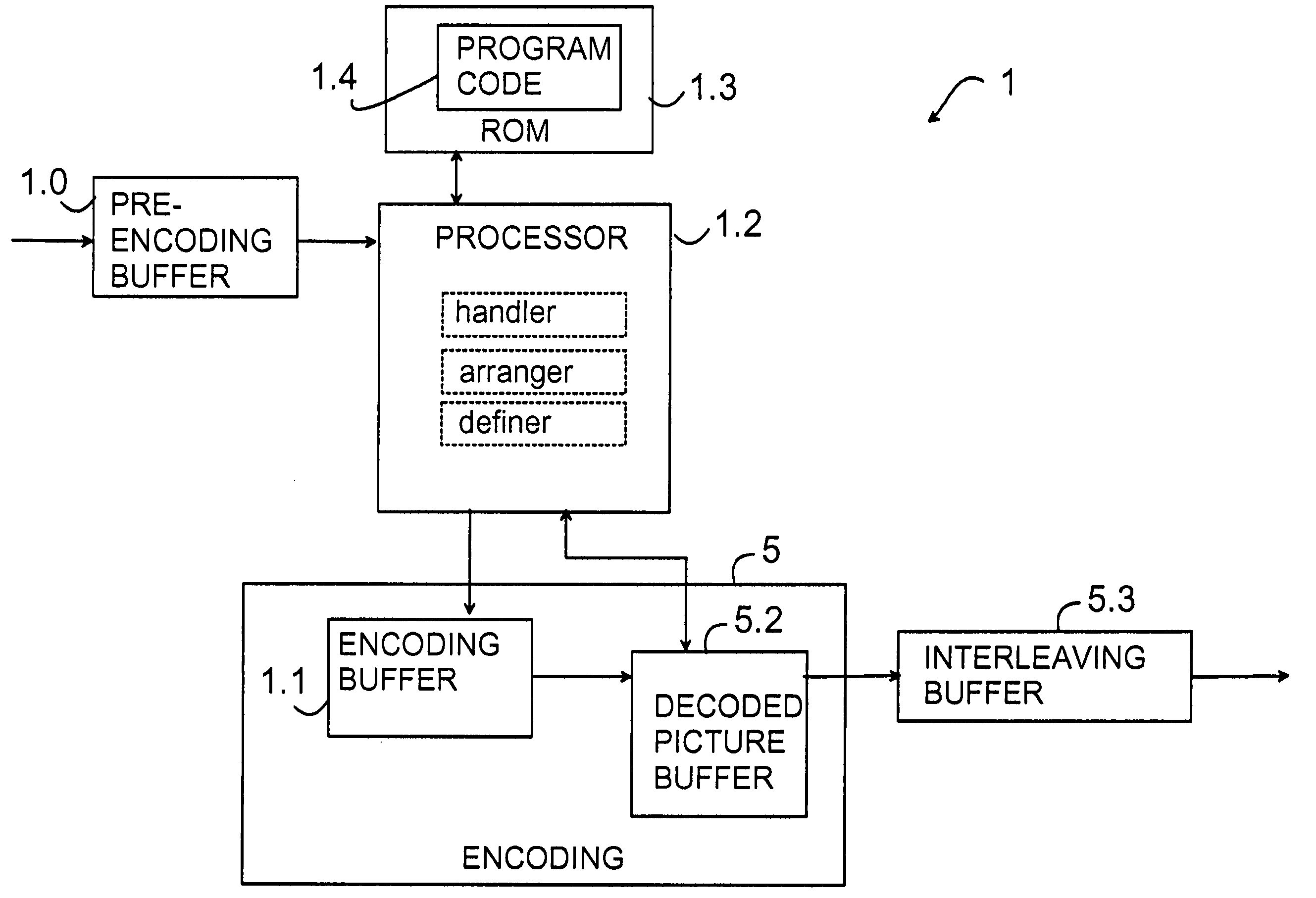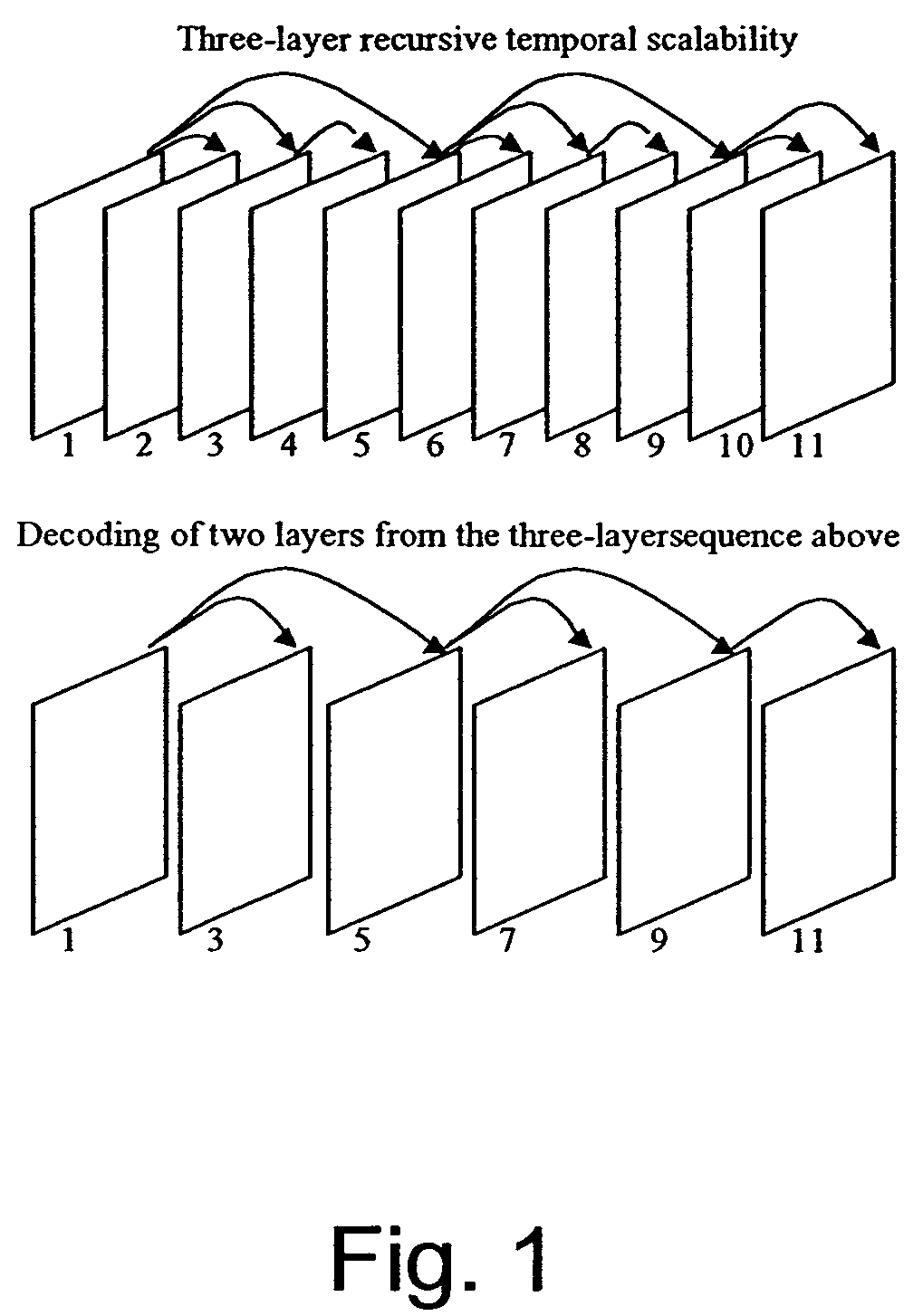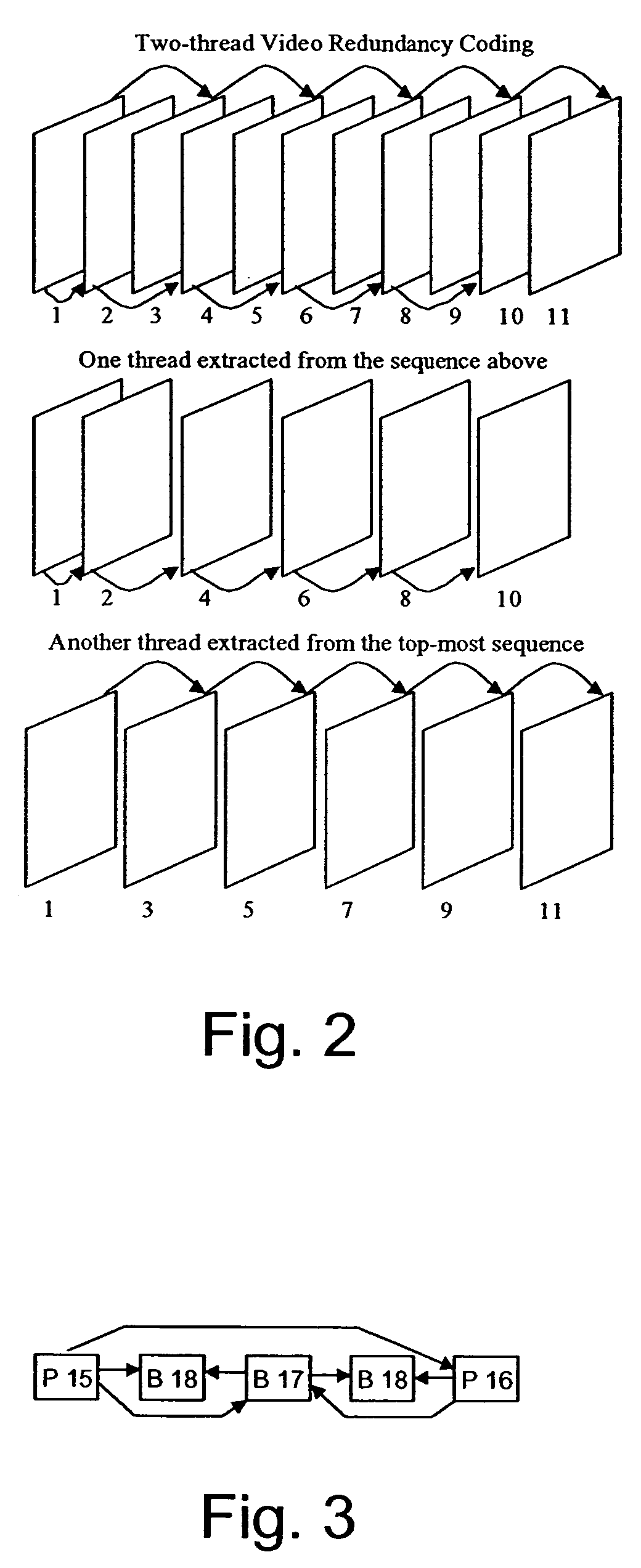Picture buffering method
a buffering method and picture technology, applied in the field of buffering media data, can solve the problems of packet loss in fixed ip networks in bursts, the decoding order cannot be reconstructed from the frame numbers, and the error propagation to the rest of the inter picture prediction chain, so as to improve the error resiliency and improve the compression efficiency
- Summary
- Abstract
- Description
- Claims
- Application Information
AI Technical Summary
Benefits of technology
Problems solved by technology
Method used
Image
Examples
Embodiment Construction
[0157] An example of a scheme where the invention can be applied follows. The sequence is spliced into pieces of a number of transmission units. The transmission units are transmitted in the following transmission order, where the numbers indicate the decoding order numbers of the transmission units: [0158] 0, 8, 12, 2, 24, 14, 31, . . .
[0159] If the decoder buffer receives all the above mentioned transmission units, the calculated maximum (absolute) difference between decoding order numbers of transmission units in the decoding buffer are as follows, if no transmission units are outputted from the buffer:
[0160] after the second transmission unit, the difference would be 8 (the absolute difference between the first and the second decoding order number);
[0161] after the third transmission unit, the difference would be 12 (the absolute difference between the first and the third decoding order number);
[0162] after the fourth transmission unit, the difference would be 12 (the absolu...
PUM
 Login to View More
Login to View More Abstract
Description
Claims
Application Information
 Login to View More
Login to View More - R&D
- Intellectual Property
- Life Sciences
- Materials
- Tech Scout
- Unparalleled Data Quality
- Higher Quality Content
- 60% Fewer Hallucinations
Browse by: Latest US Patents, China's latest patents, Technical Efficacy Thesaurus, Application Domain, Technology Topic, Popular Technical Reports.
© 2025 PatSnap. All rights reserved.Legal|Privacy policy|Modern Slavery Act Transparency Statement|Sitemap|About US| Contact US: help@patsnap.com



